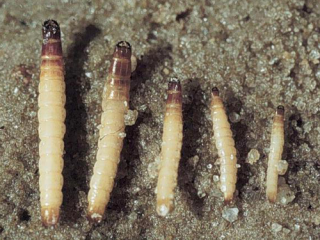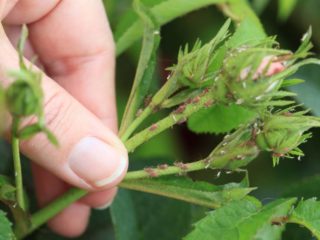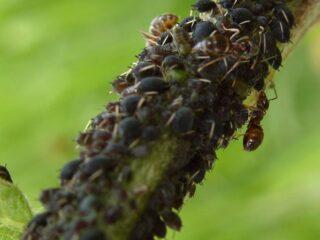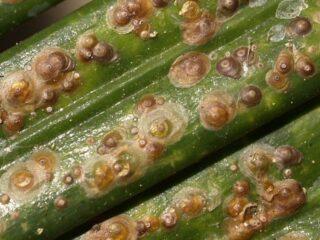Content
Grape phylloxera is a very dangerous pest that affects almost all varieties. There are several sources of infection, including rainwater, wind, insects, undisinfected instruments, and clothing. It is advisable to start fighting insects as early as possible, otherwise you may lose a significant part of the harvest.
What is phylloxera
The grape phylloxera (Viteus vitifolii) is a small insect from the family of the same name. It lives on grape vines of different varieties and damages the foliage or root system. The pest is often called grape aphids.
The insect is small, body size 0.2-2.3 mm, so it is quite difficult to see it with the naked eye. The color is yellow-green, often blending in with the background of the leaves. At a certain stage of development, wings form, which allows the pest to fly from place to place.
The insect belongs to the group of sucking insects.With its mouthparts it injects into the tissues of roots and leaves. At the same time, the pest injects toxic saliva, which causes some tissue to die.
The main danger of phylloxera is that it causes severe diseases of grapes. Putrefactive bacteria and microscopic fungi penetrate into damaged areas. They begin to feed on plant juices, which leads to the rapid spread of infection. Some grape bushes are at risk of dying.
Description of phylloxera with photo
Phylloxera is a small insect that goes through different stages of development, including wingless and winged. Divided into males and females, they look similar to each other. The photo of grape phylloxera shows that the color is yellow-green, sometimes with dirty patches or a lemon tint. There are four varieties of the insect that go through different stages in the cycle of transformation and attack different parts of the grapes. Each of them is described below.
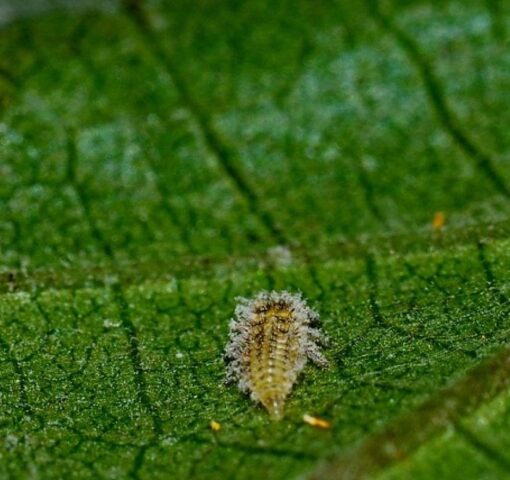
Due to the small body, it is quite difficult to see the pest on grapes
Root grape phylloxera
Root phylloxera is the most dangerous variety and causes the most damage. It is impossible to see it, since it lives exclusively on the root system. All insects are females. They do not have wings, the color is yellow-green, brownish. Black dots are visible on the back, they are located symmetrically.
This type of phylloxera has a proboscis, with which it pierces the surface of the roots of grapes, after which it feeds on the juices of the plant.
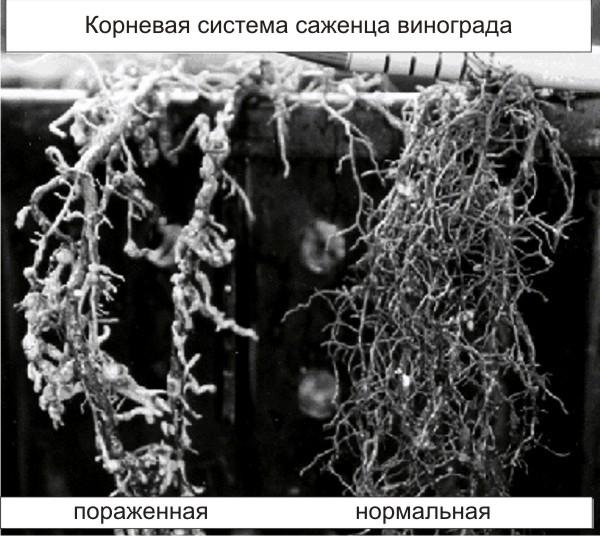
The main sign of root disease is growths and swellings at the site of damage
Winged phylloxera
These are insects at the nymph stage. They are thin, have orange bodies and wing rudiments.They are most often found in American viticultural regions, especially the Mississippi River Valley, although they are common elsewhere. They come to the surface of the soil and go through four molts. After this, they acquire wings and fly between different grape bushes. Winged forms of aphids lay eggs in the bark of old plants of two types - small and large.
Field phylloxera
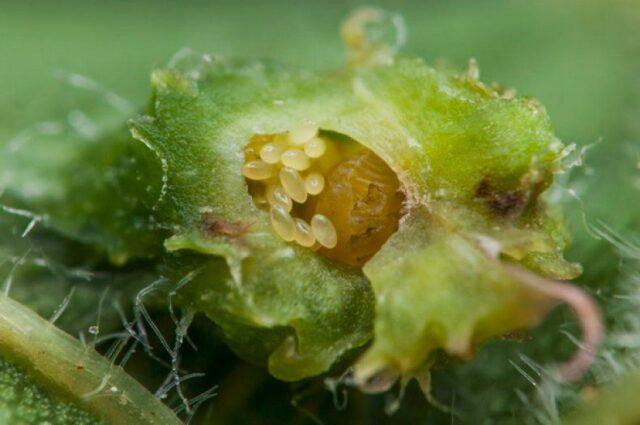
Field varieties of phylloxera develop from laid eggs - male varieties emerge from small ones, and female varieties emerge from large ones.
Insects live on average 7-8 days and do not feed on anything, since they do not have such an opportunity. Males fertilize females, the latter lay one egg in the young bark of the grape. There they spend the winter, after which they give birth to a new generation.
Leaf (gall) phylloxera of grapes
Leaf phylloxera emerges from winter eggs. The new forms are wingless, only females, acting as progenitors. They stick to the upper side of the leaf blades in the spring and begin to feed on juices. After this, spherical swellings called galls are formed on the reverse side. They can be reddish or green, and are quite large in size - about the size of a pea.
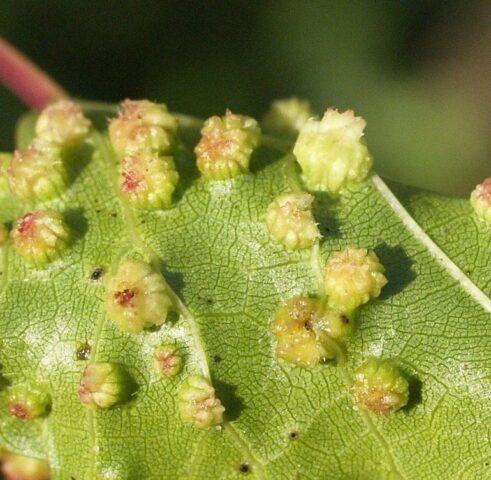
Galls on grape leaves are a sure sign of an invasion
Causes of defeat
Grape phylloxera is common in all cultivation regions, so the invasion cannot be completely ruled out. Moreover, there are several damage factors that significantly increase the risks:
- Insects that crawl on the ground can be transported along the surface along with rainwater.
- Strong gusts of wind also carry phylloxera over fairly long distances - several kilometers.
- The pest can also get in with the grafting material.If you buy cuttings with aphids, this is a sure sign that phylloxera may appear on the grapes.
- Sometimes pests can enter the area along with clothing, process water, tools and clothing. Therefore, work items should be disinfected, especially when visiting other places where grapes are grown.
- Another route of infection is through wild animals that carry insects on the surface of their body or fur.
Spreading
Phylloxera originally lived in America, but in the 1860s it was brought to Europe along with supplied grapes. Now the pest's distribution range covers almost all grape growing areas in Europe, Asia, North America and Asia.
Grape phylloxera is also found in Russia. It lives in traditional viticulture areas - Krasnodar Territory, Crimea, North Caucasus and others.
In Europe, the insect has already occupied the entire possible range. Therefore, at the present stage there is a threat of the emergence of new forms of insects. It is possible that they will be more aggressive, which will lead to the need to develop additional control measures, including insecticidal preparations.
Signs of defeat
First of all, phylloxera can be seen on grape leaves. If small pests like aphids appear there, then the roots are definitely affected. You can also determine the invasion by other reliable signs:
- Galls are reddish swellings on the upper and lower sides of the leaf (where females lay eggs).
- The grape bush looks weakened and lags behind in development.
- The vine grows more slowly and fruiting decreases.
- The yield drops significantly, and with the invasion of gall phylloxera, it can drop almost to zero.
- Young bushes may die in 3-5 years, and old ones - later.
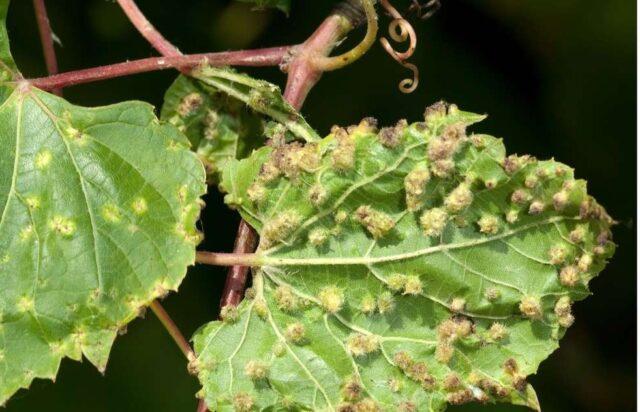
The leaves of a plant damaged by a pest can be easily identified visually
How to deal with phylloxera on grapes
There are several ways to treat phylloxera infestations in grapes. The main thing is treatment with special preparations. Along with them, it is recommended to use traditional methods and agricultural techniques. It will not be superfluous to follow basic preventive measures.
Folk remedies
Folk remedies for grape phylloxera are quite effective control measures, but only in the early stages of the invasion. They are used in combination with chemicals, as well as for prevention. Among the most effective recipes are the following:
- A solution of ferrous sulfate with a concentration of 3%, i.e. 300 g per 10 l - it is used for foliar treatment.
- The same solution, but with a concentration of 5%, i.e. 500 g per 10 l, used for watering the root zone. You first need to dig a hole so that the liquid goes to a depth of at least 15-20 cm, then after absorption you can return the soil to its place.
Preparations for grape phylloxera
Phylloxera on grapes can also be treated with special drugs that have a specific effect:
- Gamma isomer of hexachlorocyclohexane - treatment is carried out during active reproduction of pests.
- Narrow-targeted drugs - used during the cold period, when insects are hibernating.
Insecticides
Insecticides are effective treatments, for example:
- "Marshal";
- "Aktellik";
- "Mitak";
- "Zolon."
To prevent and kill insects, it is recommended to carry out several treatments:
- in early May after two leaves appear;
- at the end of spring after the appearance of 10 or more leaf blades;
- in the last ten days of June, when the bush is completely leafy.
Agrotechnical techniques
Agricultural techniques are also used to combat and prevent pest invasions, for example:
- When you notice the first signs, you need to dig out the roots by making a hole on the side of the bush and inspect them. If there are swellings, it means that the lesion has already occurred. In this case, a total treatment of both diseased and healthy grape bushes should be carried out.
- If the bushes have already been severely damaged by phylloxera, all that remains is to dig them up. Such seedlings are burned away from the site.
- When planting, you should try to use varieties that are resistant to phylloxera. The most common ones are described below.
- In the cold season (autumn, early spring), it is recommended to completely flood the field with grapes with water. You can also try replacing the top of the soil with sand.

If an infestation has recently been observed, new bushes should be planted in this place no earlier than five years later.
Disease prevention
Fighting grape phylloxera is not always easy, so experienced gardeners and farmers recommend annual prevention of the invasion. The following methods help with this:
- Try to grow bushes on sandy soils.
- Carry out preventive treatments every spring.
- Inspect the bushes regularly and, if necessary, begin treatment as early as possible.
- Provide normal care (watering, fertilizing, loosening the soil and other measures).
Grape varieties resistant to phylloxera
Among the varieties resistant to phylloxera, there are mainly American varieties, which in Russian practice are often used as rootstocks. They are resilient because although insects settle on their roots, this does not lead to tissue rotting.Varieties with good immunity primarily include: Lydia, Isabella, Concord.
There are also tolerant varieties with relative resistance: Gift Magaracha, Valentina, Frontignac, Citronny Magaracha, Augustin, Frontignac blanc, Bianca, Moldova and others.
Conclusion
Grape phylloxera is a dangerous insect that attacks many varieties. To avoid invasion, it is recommended to regularly carry out at least three treatments per season using insecticidal preparations. To combat the pest, you can use folk remedies, as well as agricultural techniques.

